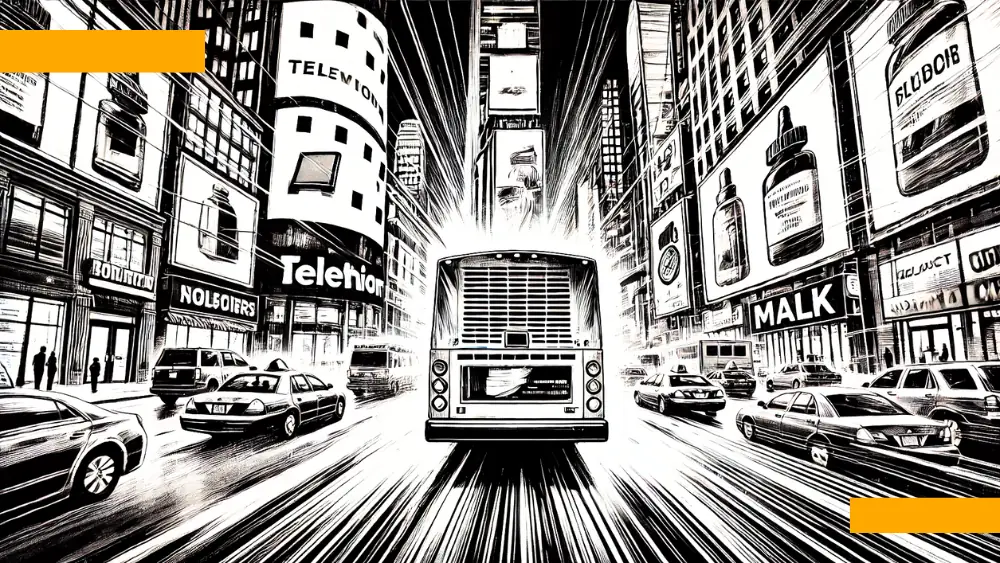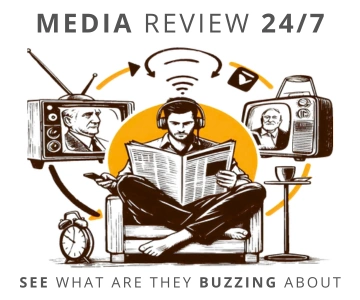 illustration: DALL-E
illustration: DALL-EIn 2024, out-of-home (OOH) advertising in Poland saw strong growth, reaching a value of PLN 806 million. That’s a 9.7% increase from the previous year, according to the "OOH Advertising in Poland" report by OOHlife Economic Chamber. The Digital OOH segment expanded especially rapidly, with a value increase of 32.2%, reaching PLN 231.85 million. The market has entered a new phase of development where digitization, automation, and integration with other communication channels are taking the lead.
Billboard or screen? The market is going digital
The outdoor advertising market in Poland consists of three main segments: classic OOH, public transport advertising, and Digital OOH (DOOH). While traditional formats still dominate in terms of market share, it`s the digital format that is growing the fastest. In 2024, DOOH accounted for nearly 29% of the market, compared to just 11.3% five years ago.
| Outdoor advertising segment | Value (PLN million) | Year-on-year growth |
|---|---|---|
| Classic OOH | 521.73 | -0.08% |
| City transport | 52.46 | +29.6% |
| Digital OOH | 231.85 | +32.2% |
| Total | 806.04 | +9.7% |
Despite a drop in the percentage share of traditional formats (from 69.1% to 64.7%), their value remained stable. This segment is led by 18 m² billboards and illuminated citylights, which generate nearly 70% of revenue here.
Bus as billboard and the digital offensive
The public transport advertising segment performed surprisingly well. The value of campaigns on internal and external media in buses, trams, and the metro increased by nearly 30%. This growth was driven by advertisers focusing more on smaller cities and combining traditional spaces with digital LCD screens.
- Main clients included brands from the telecom, retail, food, and media industries.
- New developments included campaigns by local governments and the growing importance of vehicle route tracking systems, which allow for more precise targeting.
Public transport advertising is becoming not just a visual element but also an analytical tool. Digital media saw the fastest growth. The 32.2% increase was fueled by a growing number of public screens - at bus stops, shopping malls, airports, and onboard public and rail transport vehicles.
- DOOH now makes up 28.8% of the total market.
- In Q4 2024, its share hit a record 32.6%.
- Screens are managed in real time via programmatic technology, enabling dynamic content personalization.
This makes DOOH an attractive option for brands seeking to combine precise targeting with broad reach.
Who’s investing in OOH?
Ad spending in 2024 was concentrated in several key sectors:
- Retail - 15% share of the OOH market
- Telecom - 13%
- Media - 12%
- Food - 11%
- Beverages and alcohol - 8%
For Digital OOH, the structure is similar, though the food sector has a slightly larger share and retail a bit less. According to the authors of the OOHlife Economic Chamber report, the outlook for 2025 is just as dynamic. Influences may include the presidential election, continued digitization, the growth of analytics tools, and the rising importance of sustainability - more companies are investing in energy-efficient formats and green technologies.
COMMERCIAL BREAK
New articles in section Marketing and PR
Dance in the media mirror. Between culture, business and viral fame
KFi
Over 78,000 media pieces, 1.6 billion potential views, and 197,500 social media mentions-dance in Poland is no longer niche. With a combined media value exceeding PLN 800 million, it now outperforms MMA, handball, and hockey.
PR in Poland. Ranking of the largest public relations agencies 2025
KFi
The smallest teams often generate the most publications, and agencies outside Warsaw are increasingly capturing media attention. This unexpected distribution of power is one of the key findings from the 2025 PR Agency Ranking in Poland, developed by Widoczni and IMM.
Connected TV and borderless advertising. The ID5 report
KFi
Viewers are moving away from cable TV. And they are doing it en masse. Already 86% of Europeans watch content via Connected TV and global ad spend in this segment is set to double by 2028. The industry is undergoing a communication revolution.
See articles on a similar topic:
Internet Subscriptions: Market Value, Development Trends, and... Risks
KrzysztoF
According to McKinsey & Company, the number of subscription users globally has increased by over 17% in the past year. A report from UBS Group AG indicates that the total value of the global subscription market will reach as much as $1.5 trillion by 2025. This is twice as much as in 2020!
Large Online Ads vs. AdBlock. Poland Leads in Both Metrics
BARD
Large-format online ads make up 14% of Poland's online market, according to analyses by Gemius. This is the highest percentage among all surveyed markets. Paired with data on the rising popularity of ad-blocking - done by one-third of Polish internet users - it raises questions about the future of these ads.
Trends and threats in online advertising. Media Quality Report 2025
Krzysztof Fiedorek
In 2024, the digital advertising world lost about 100 billion dollars due to fake impressions. A report published by Integral Ad Science shows that so-called fraud is getting smarter, and campaigns are increasingly exposed.
LabOOOratorium. Education, Business and Win-Win-Win Cooperation
fundacja OOO
How to combine diversifying activities in kindergartens and schools with setting innovative trends in education and social engagement of businesses? The educational foundation Ogólnopolski Operator Oświaty and the company Musicon show how to do it right.





























